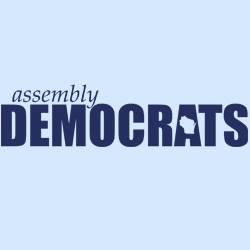In 2010, Republicans nationwide swept Democrats out of state houses, and Wisconsin’s state Assembly was no different. Wisconsin Assembly Republicans went from the minority to a commanding majority in one fell swoop following the 2010 elections, picking up 15 seats across the state. A majority that, while ushered in by a wave, has expanded over the last two election cycles and now sits at a remarkable 63-36 advantage.
No one foresees a similar scenario taking place in 2016 that would swing the pendulum decisively the other way, but, with voter turnout in 2016 being a wildcard for a number of reasons, Assembly Democrats have an opportunity to shrink their deficit. Can they take advantage of Republican party discord at the top of the ticket, or have Assembly Republicans insulated themselves from any down ballot fallout?
From a tactical standpoint, Assembly Republicans are in as strong a position as they have ever been. Financially and strategically they are prepared to weather a potential storm. There are two points here to be considered:
First, what is the likelihood of a wave that hits state level candidates similar to the ones we saw in 2006 in the Senate and the Assembly, 2008 in the Assembly, and 2010 in the Senate and the Assembly?
Opinions vary on this. Republican leaders in both state houses will tell you their polling shows no signs for concern. The same polling showed strong support for Trump in the areas where their candidates might be most vulnerable. Meaning to them, that unlike the waves that hit in previous elections, this potential one will not be directed at the party in power. Even if Trump loses by seven to 10 points in Wisconsin (Real Clear Politics has Clinton’s average poll advantage at +7 and rising) the reverberations won’t be felt down ticket. Especially given the advantages Republicans hold in most districts: significant resource advantages both in hard dollar and third party spending, candidates with higher name recognition, districts that were crafted under the last redistricting process that was controlled solely by Republicans, and from top to bottom, a very strongly run campaign operation. Finally, in 2012 Obama won Wisconsin by nearly seven points and Assembly Republicans maintained their margin.
 Democrats would counter that their early polling shows the potential for broader success. Generic ballot numbers were more favorable to Dems than in previous years (a talking point used by Assembly Republicans prior to their 2010 take back), and given the current state of the presidential race, it would be impossible for some of the Republican discontent to not filter down toward the local races. Either through establishment Republicans who decide to sit this one out or Trump backers who only vote for him and skip the rest of the ballot in an establishment protest vote. They also argue that voters tend to not make up their mind on Assembly races until late and if there is depressed turnout on the Republican side the generic ballot numbers will be more accurate than head-to-head polling done in early October.
Democrats would counter that their early polling shows the potential for broader success. Generic ballot numbers were more favorable to Dems than in previous years (a talking point used by Assembly Republicans prior to their 2010 take back), and given the current state of the presidential race, it would be impossible for some of the Republican discontent to not filter down toward the local races. Either through establishment Republicans who decide to sit this one out or Trump backers who only vote for him and skip the rest of the ballot in an establishment protest vote. They also argue that voters tend to not make up their mind on Assembly races until late and if there is depressed turnout on the Republican side the generic ballot numbers will be more accurate than head-to-head polling done in early October.
Second question, if there is a wave in favor of Democrats in Wisconsin when would we know it and can it be stopped?
Using recent past wave elections, there were early indicators predicting nationwide change toward one party or the other. Prior to the general elections we saw Republicans winning historically Democratic districts in special elections or vice versa and a palpable anti-incumbency sentiment aimed at the party in power. Also, and maybe more importantly, prior to the waves in 2006 and 2010 one party controlled the Presidency, the Senate, and the House, which is not the case here.
Trump’s overall prominence in the 2016 electoral cycle may have helped shield Republican incumbents from an anti-incumbency sentiment and Hillary Clinton being the standard bearer for the Democrats similarly softened that tone due to her being largely viewed as an establishment incumbent. Further, Trump is running a campaign aimed at being an anti-establishment outsider which even more muddles the picture on what to expect from the general electorate in 2016 given he is at the top of the ticket for the party that controls all of Congress and the majority of state houses. Finally, throw in what appears to be an electoral malaise emanating from younger voters and turnout in 2016 still remains very hard to predict. So the answer to the first part of the second question is: while statewide polling averages show Clinton and Democratic U.S. Senate candidate Russ Feingold with comfortable leads, there is nothing as of right now that would predict sweeping victories for legislative Democrats.
It is possible that the national trend lines continue in the same direction toward election day and Trump not only loses, but loses bigly (sorry, had to do it), it could depress turnout on the Republican side resulting in the types of spreads we saw in 2008 where Obama beat McCain by nearly 14 percent in Wisconsin. That kind of spread would likely result in some unexpected losses on the Assembly side, regardless of how prepared they are.
So which districts are in play? Each party caucus will have their own version of this, but if you consider past results from 2012 and 2014 there are some obvious candidates. Combining those  numbers with what we hear about the races we have tiered those races by likeliest to flip back into Democratic hands.
numbers with what we hear about the races we have tiered those races by likeliest to flip back into Democratic hands.
First Tier—these two are toss-ups
51st Assembly District (Iowa/Lafayette Counties): Republican incumbent Todd Novak (R-Dodgeville) versus Jeff Wright. Novak won the open seat in 2014 by less than 70 votes. In 2012 Obama won this Assembly district by 5,500 over Mitt Romney and Sen. Tammy Baldwin beat Tommy Thompson by 3,500 votes, but Republican Howard Marklein (R-Spring Green) won the Assembly seat by 1,000 votes. Assembly Republicans often do much better than their counterparts at the top of the ticket especially in this area of the state but if the spread gets any bigger at the top of the ticket than 2012’s numbers it would be very difficult to defend.
85th Assembly District (Wausau): Republican Pat Snyder versus Democrat Mandy Wright. This one isn’t the strongest district for Democrats, but Wright represented the district before losing by less than 90 votes in 2014 to retiring Republican Dave Heaton (R-Wausau). This race is a rematch that Wright won by over 900 votes against Snyder in 2012. Early polling showed Trump with solid numbers in the Wausau market meaning the 85th could be a nail-biter yet again.
Second Tier—If Clinton wins in these districts by two to four percent they are in play
29th Assembly District (parts of St. Croix/Dunn Counties): Republican Rob Stafsholt versus Democrat Scottie Ard. An open seat in a swing district puts it on this list. It is likely to stay Republican, but could be one taken if Republican turnout is depressed.
50th Assembly District (Reedsburg/Mauston): Republican incumbent Ed Brooks (R-Reedsburg) versus Democrat Art Schrader. This seat is on the radar for two reasons, Democrats recruited what appears to be a known commodity in parts of the district, and Obama won the district by 2,500 votes in 2012. In similar fashion to the 51st Assembly District, the current incumbent still won his race by about 1,000 votes that year. Both caucuses have this race on their top five target list.
67th Assembly District (Chippewa Falls): Republican Rob Summerfield versus Democrat Dennis Hunt. Another open seat with two solid candidates. Tough district for Democrats in normal years, but is in play.
68th Assembly District (parts of Eau Claire and Clark Counties): Republican incumbent Kathy Bernier (R-Chippewa Falls) versus Democrat Howard White. Current numbers seem to predict Bernier will come back with a win with around 1,000 votes. But both caucuses seem focused on this race which tells us early polling had it starting out closer than expected. Bernier outperformed Romney in 2012, but underperformed Walker in 2014 both resulting in her winning by about 1,200 votes.
70th Assembly District (Tomah, Wood County): Republican incumbent Nancy VanderMeer (R-Tomah) versus Mark Holbrook. VanderMeer is expected to win, but if Clinton were to win this district it could have reverberations down ticket here.
72nd Assembly District (Waushara/Adams Counties): Republican incumbent Scott Krug (R-Nekoosa) versus Democrat Dave Gorski. This race is a bit of a sleeper. Krug has been targeted before, and he only won by 109 votes in 2012 yet his race has fallen off the radar in 2016. Krug is more entrenched now than in 2012 when Romney beat Obama in this district by 400 votes, but if Clinton wins the district the Assembly race here could be closer than expected.
Third Tier—Maybe, pickups in a wave year……maybe
42nd Assembly District: Republican incumbent Keith Ripp (R-Lodi) versus Democrat George Ferriter. Key Democratic number: Obama 51/Romney 48. Key Republican number: Ripp won his last two races by over 3,500 votes.
49th Assembly District: Republican incumbent Travis Tranel (R-Cuba City) versus Democrat Jesse Bennett. Key Democrat number: Obama 56/42. Key Republican number: same year, Tranel won by over 2,200 votes.
75th Assembly District: Republican incumbent Romaine Quinn (R-Rice Lake) versus Democrat Joe Huftel. Key Democrat number: Stephen Smith beat Republican Roger Rivard in 2012. Key Republican number: Romney 51/Obama 47.
You could argue others should be on this list. For example, if you used the standard of “if Clinton wins this district by 2 to 4 percent” a lot of others would be on this list. Our assessment combines past electoral history by what we are hearing on the ground. Prior to redistricting, Assembly races tended to provide at least one surprise on election nights and its possible there is one that happens that is not on this list.
In Summary
There are clearly signs that 2016 could be a big year for Wisconsin Democrats. Clinton is poised to win the state comfortably and Feingold has led against Johnson box-to-wire in 99 percent of polls. But even with those wins, legislative Democrats would need a significant downward shift in Republican turnout combined with high Democratic turnout in rural/swing areas in order to take advantage of the top of the ticket victories. If those elements for a wave exist, they haven’t availed themselves yet and the likeliest scenario would be a slight gain for Assembly Democrats.
Assembly races are the toughest ones to get a pulse on and often break later than the higher profile races. Tidbits will track closely developments over the next two weeks to see if our current assessment holds. For more coverage on the elections, be sure to check out Hamilton’s 2016 Elections Issue Update Page.